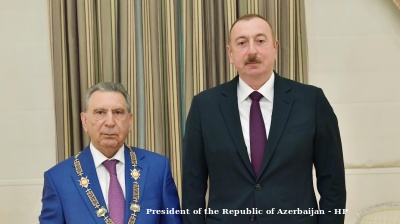Several countries in Central Europe have gone a long way down the road of illiberalism, moving away from the practices of established democracies, according to participants at the 10th European Communication Conference 2024 – Communication and Social (dis)order (ECREA) held in Ljubljana.
Since Viktor Orban notoriously described his Hungary as “illiberal state” in his 2014 re-election speech, the term has been frequently used in connection with populist governments criticised for democratic backsliding worldwide. In Central Europe, the term has been associated with Orban’s allies, such as the ex-prime ministers Czech Andrej Babis and Slovenian Janez Jansa or sitting Slovak PM Robert Fico.
Opening a round table discussion at the conference, moderator Mojca Pajnik of the Ljubljana-based Peace Institute and University of Ljubljana described illiberalism as “very much a disruptive force”.
Pajnik hosted the round table with authors of a new book, “The Illiberal Public Sphere – Media in Polarized Societies”, Vaclav Stetka and Sabina Mihelj of Loughborough University and Peter Bajomi-Lazar of Budapest Business University, organised and moderated by the Ljubljana-based Peace Institute and the University of Ljubljana. The book focuses on the role of the media in the rise of illiberalism in Czechia, Hungary, Poland and Serbia, setting out a model of three stages of this rise.
These consist of stage one (“incipient”), the presence of oppositional, usually right-wing content in the public, which is not unusual across European societies. More dramatic changes occur in stage two (“advanced”) when the capture of institutions occurs. Stage three is, in this depiction, “a hegemonic stage of the illiberal public sphere” where affected countries move away from practices in established democracies.
Hungary and Serbia under the leadership of Viktor Orban’s Fidesz party and Aleksandar Vucic’s Serbian Progressive Party (SNS) are very close to stage three, Stetka told the event.
On the other hand, illiberal developments in Czechia during the populist government led by Babis while nationalist President Milos Zeman was in power were slowed by the relatively resilient role of the country’s public broadcasters.
“The role of public media is crucial,” Stetka said.
New modes of communication
These days, however, public media is only part of the picture. Bajomi-Lazar highlighted that Europe has experienced “a paradigm shift in communication” marked by the rise of social media platforms and the politicisation of communication.
From this perspective, the concept of “media capture” is important to understand developments in Hungary ten years ago, according to Bajomi-Lazar. However, it is “not a sufficient analytical tool anymore” to account for the scale of change that occurred in the public domain in Hungary during the reign of Orban’s Fidesz party – a period which Pajnik described as “Orban producing a code book” for other illiberal actors to follow.
“The more illiberal the public sphere is, the more illiberal the population can get,” Bajomi-Lazar said, reflecting on the ability of illiberal politics to spread among the public given stable access to communication channels. He pointed to the conservative dimension of the country’s revived opposition under Peter Magyar.
Pajnik, meanwhile, gave the example of the last cabinet of Slovenia’s Jansa, whose tenure was marked by what pundits dubbed “media wars” and Jansa’s Slovenian Democratic Party’s (SDS’s) efforts to exercise control over the public media in the country.
Ilija Tomanic Trivundza, chair of the local organising committee and former ECREA chairman, told bne Intellinews that as a result of the rapid communication changes “society is more prone to losing consensus”.
Mihelj said that the “ideological repertoire” of illiberal actors relies on polarising topics which can include migration, homophobia, racism or LGBTQ rights.
She pointed out that data collected in the book show Czech society to be the most anti-immigrant of the four examined, while at the same time the most LGBTQ-friendly. Polarising topics do not necessarily have to be pushed by political actors, Mihelj said, pointing to the role of the Catholic Church in Poland.
Today, “some discourses are so dominant that it is becoming nearly impossible to change them,” Mihelj added.
Illiberalism on steroids
When asked by bne Intellinews about the sweeping changes the left-right cabinet of the Slovak populist Prime Minister Robert Fico introduced in the media, judiciary, police and other public institutions in the country, Stetka said that “what is happening in Slovakia is illiberalism on steroids”.
Stetka also pointed to the recent case of the opposition legislator from the centrist Progressive Slovakia party and lawyer Lucia Plavakova, who was walked out of the country's parliament for having a heart-shaped rainbow sticker on her laptop and called a female-related insult by Rudolf Huliak, a legislator from the junior ruling party, the far right Slovak National Party (SNS).
The EU is an important backstop of illiberal rise in the region, Stetka said in response to the question of whether an EU member state can become fully authoritarian. “Perhaps Orban did not go full-blown authoritarian” because he did not want to “risk [Hungary’s] EU membership, but this backstopping ability of the EU “will be put to the test”, Stetka forecast.
The conference in Ljubljana covered over 20 thematic areas and provided an open platform to address wide-ranging issues, from advancement in AI and technology to intersections between communication and the resurgence of populist politics to war in Gaza.
About 680 delegates from 55 countries took part in the academic conference from September 24-27, while there were close to 1,700 participants registered in total and some 1,000 presentations delivered mostly from Europe, but also from Asia and North America
Features

The fall of Azerbaijan's Grey Cardinal
Ramiz Mehdiyev served as Azerbaijan's Presidential Administration head for 24 consecutive years, making him arguably the most powerful unelected official in post-Soviet Azerbaijan until his dramatic fall from grace.

Ambition, access and acceleration – Uzbekistan’s Startup Garage opens free academy for entrepreneurship
Aim is to train 50,000 young founders by 2030.

Ukraine’s growing energy crisis promises a cold and dark winter
Since the summer, Kyiv has changed tactics. Given the almost complete failure of Western oil sanctions to curb Russian oil exports, it has been targeting Russian oil refineries. The Kremlin has struck back, targeting Ukraine's power system.

Russia, China sign off on Northern Route shipping deal to slash global freight times
Russia and China have signed a landmark agreement to develop and commercialise the Northern Sea Route (NSR), after Beijing tested the route last month, that could slash Europe-Asia cargo transit times and challenge the primacy of the Suez Canal.




